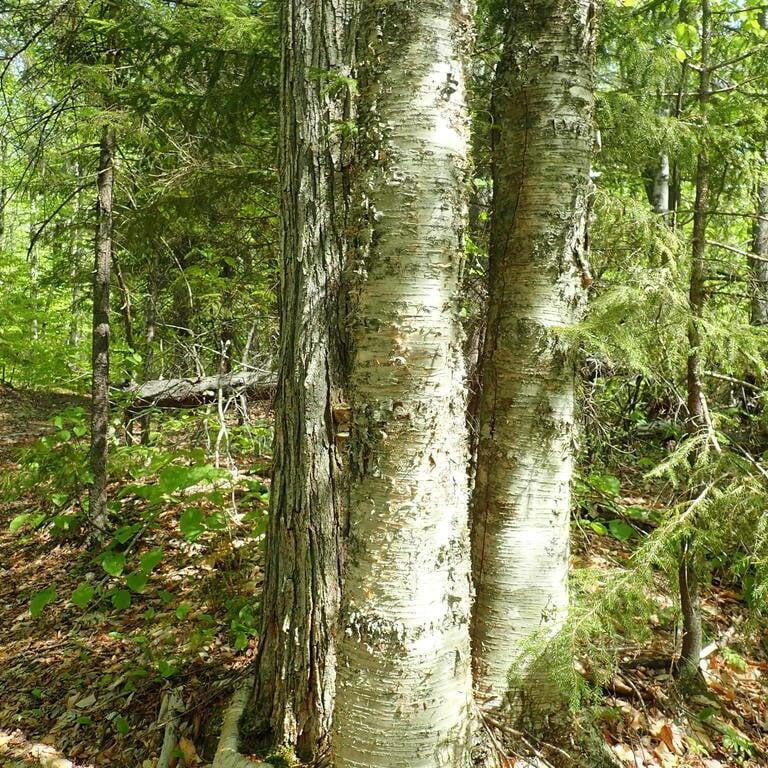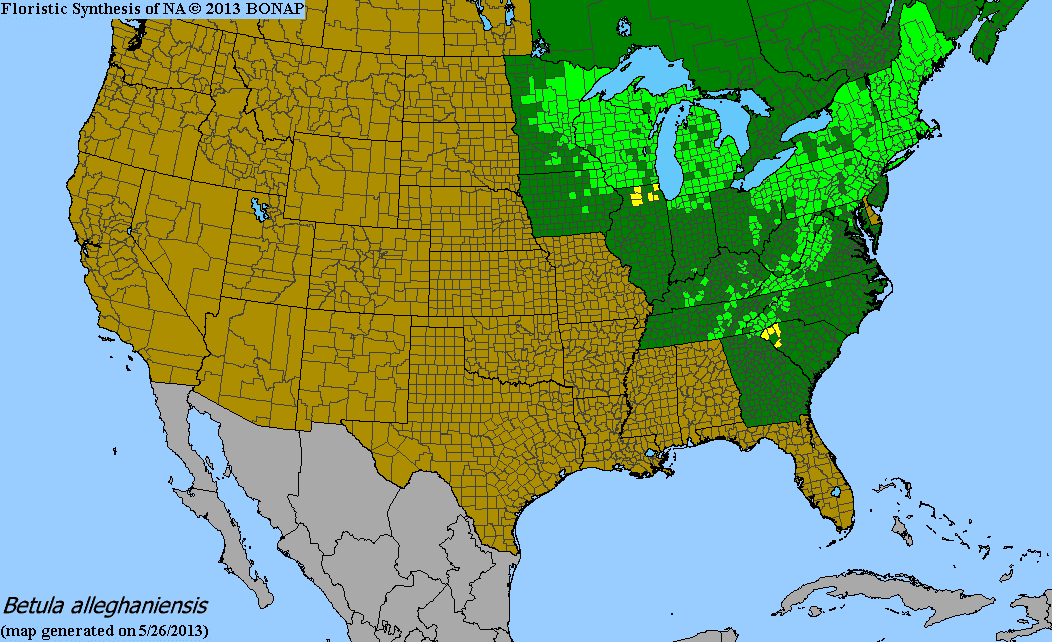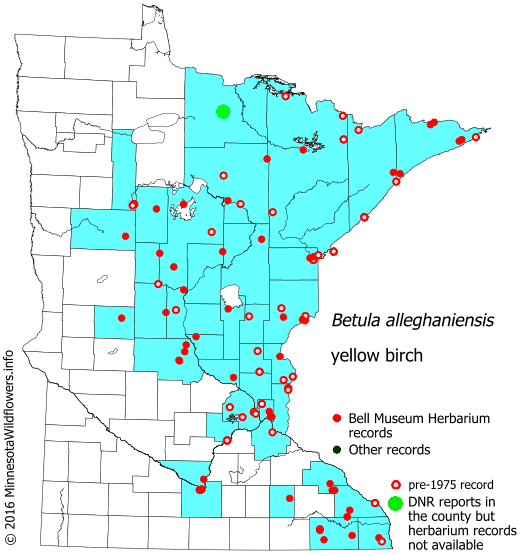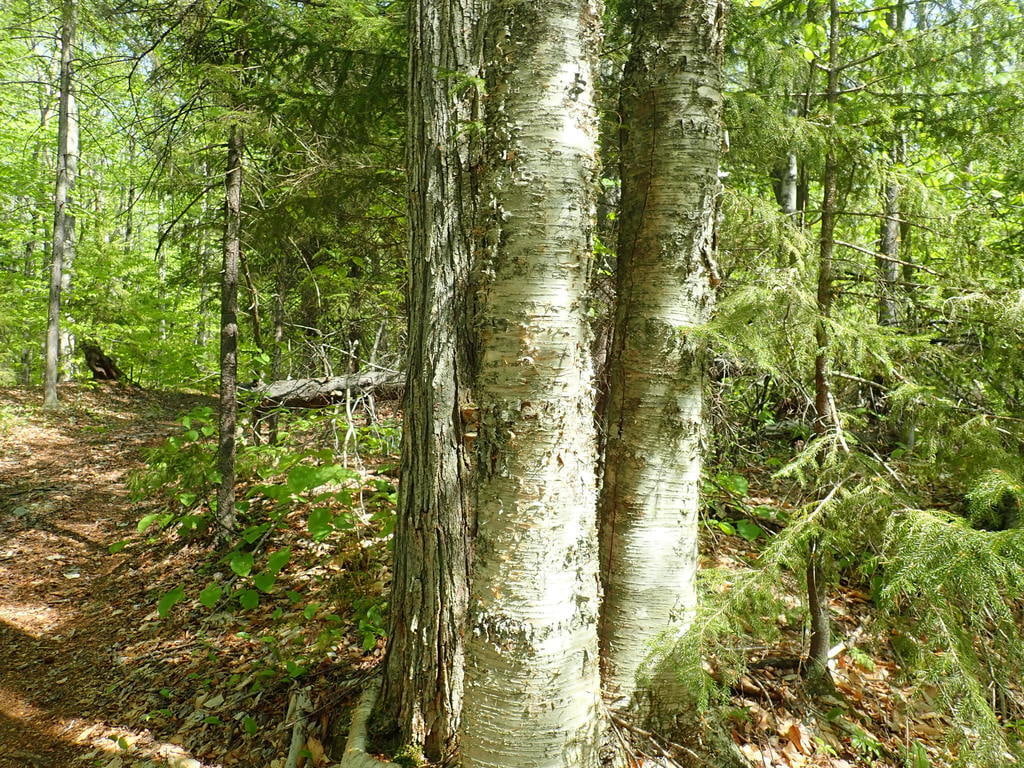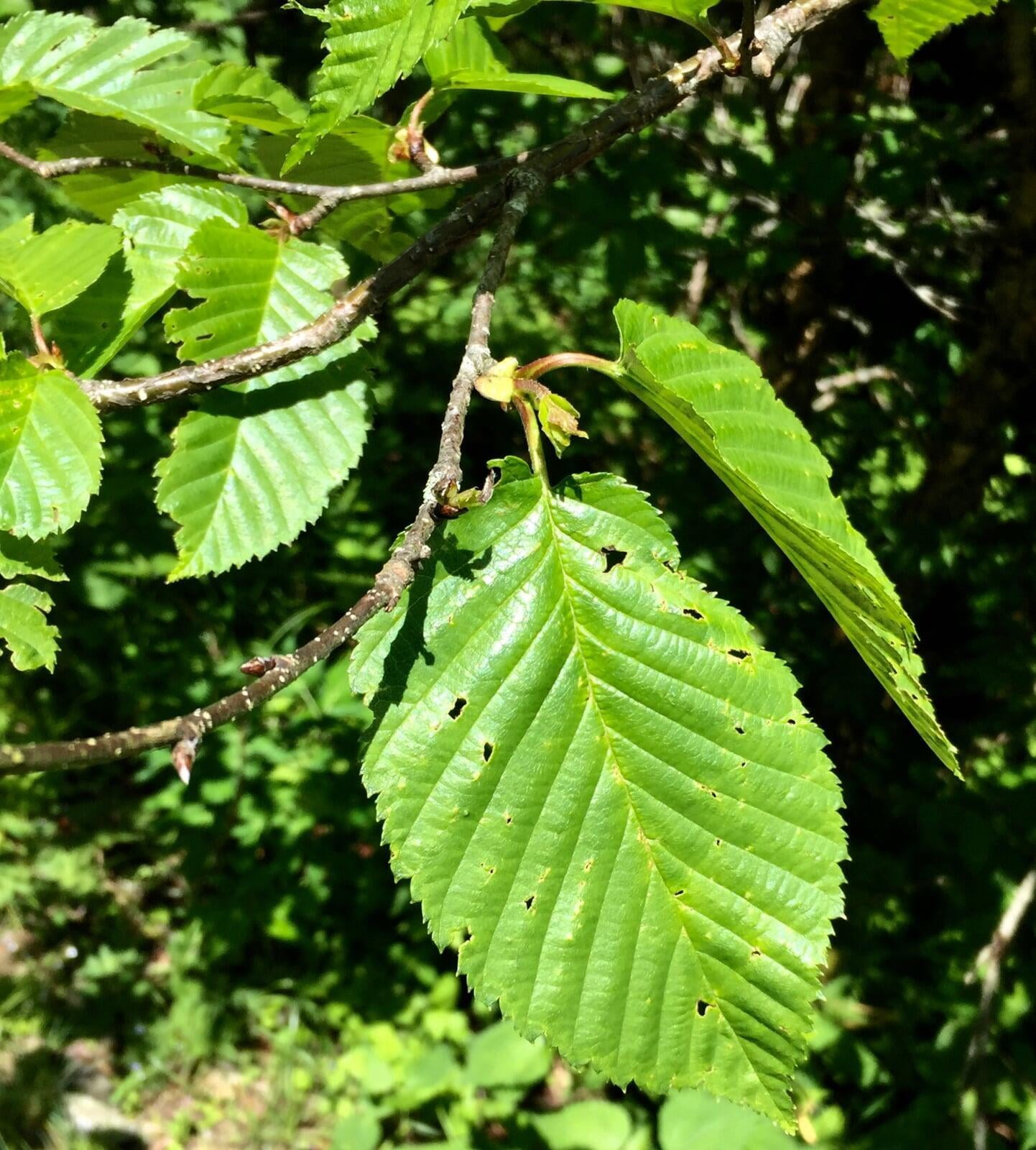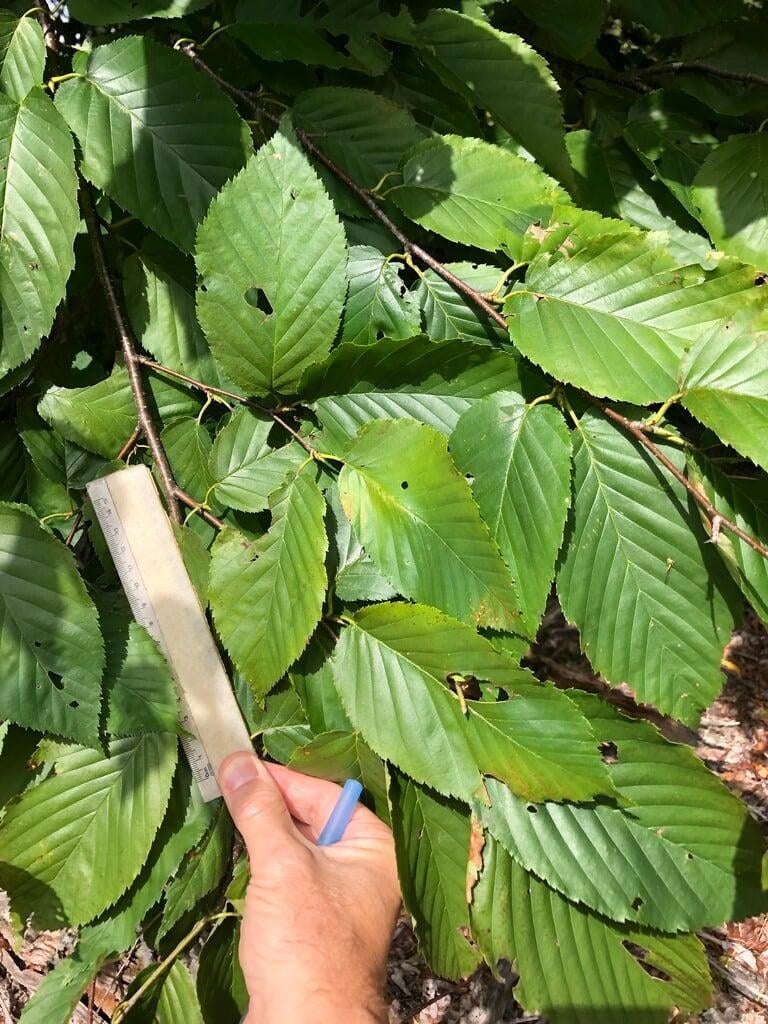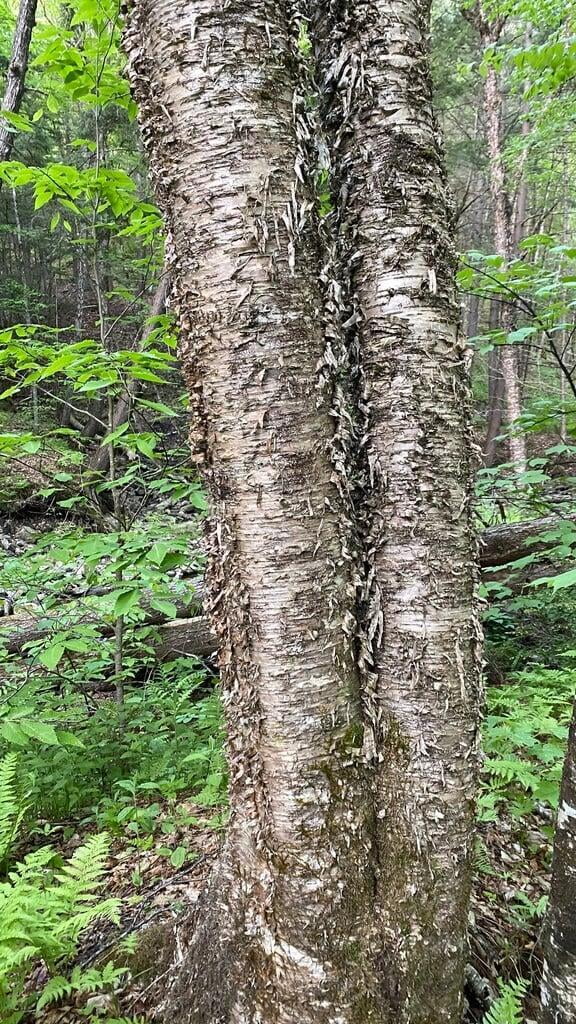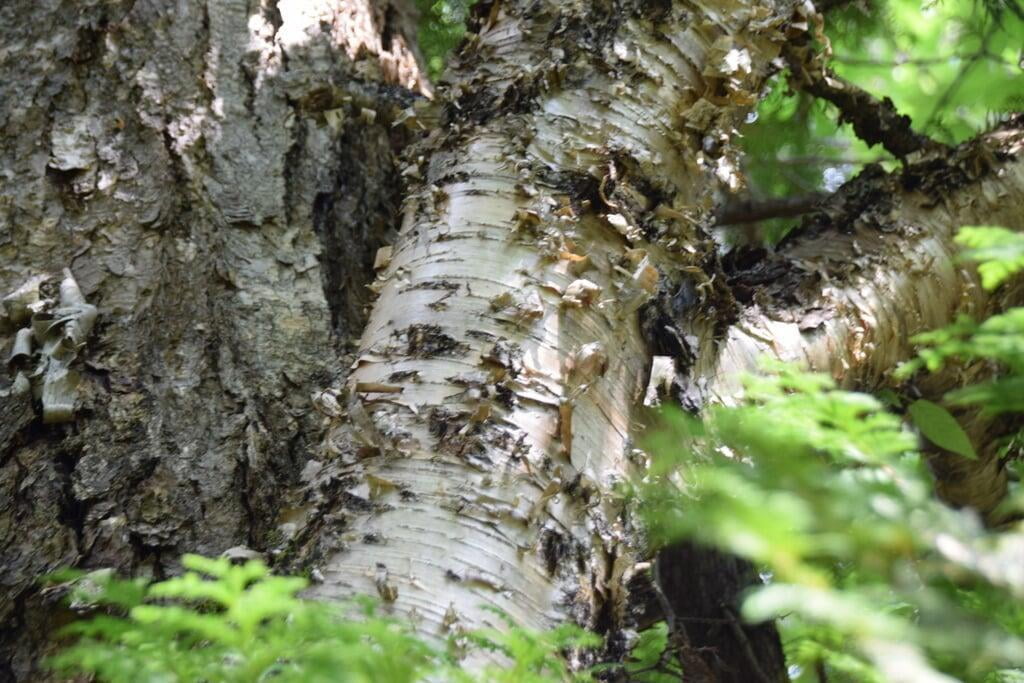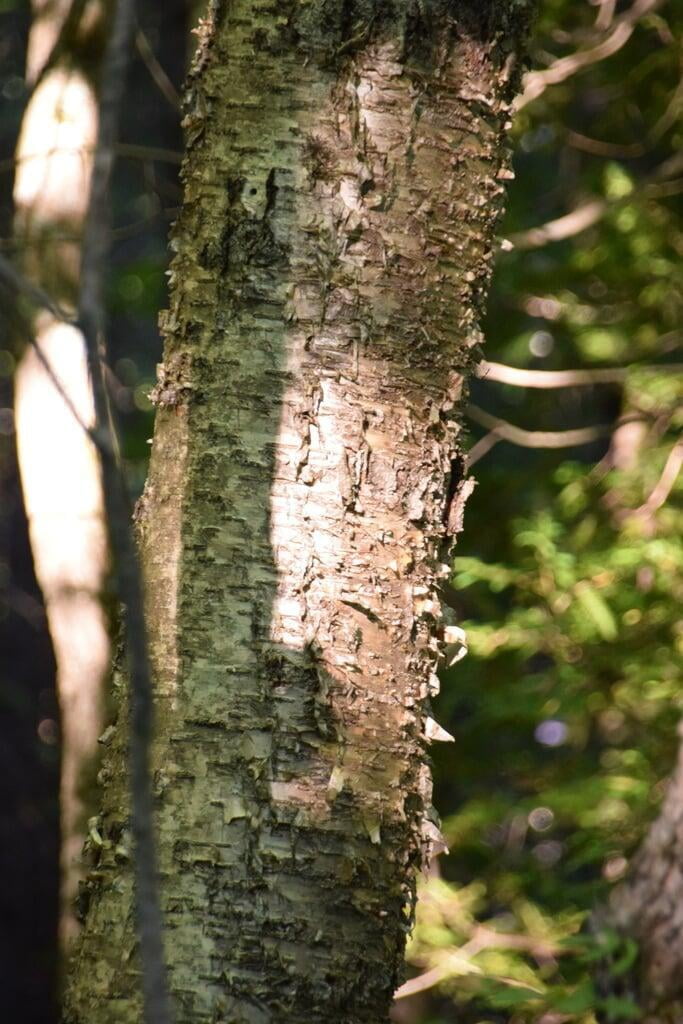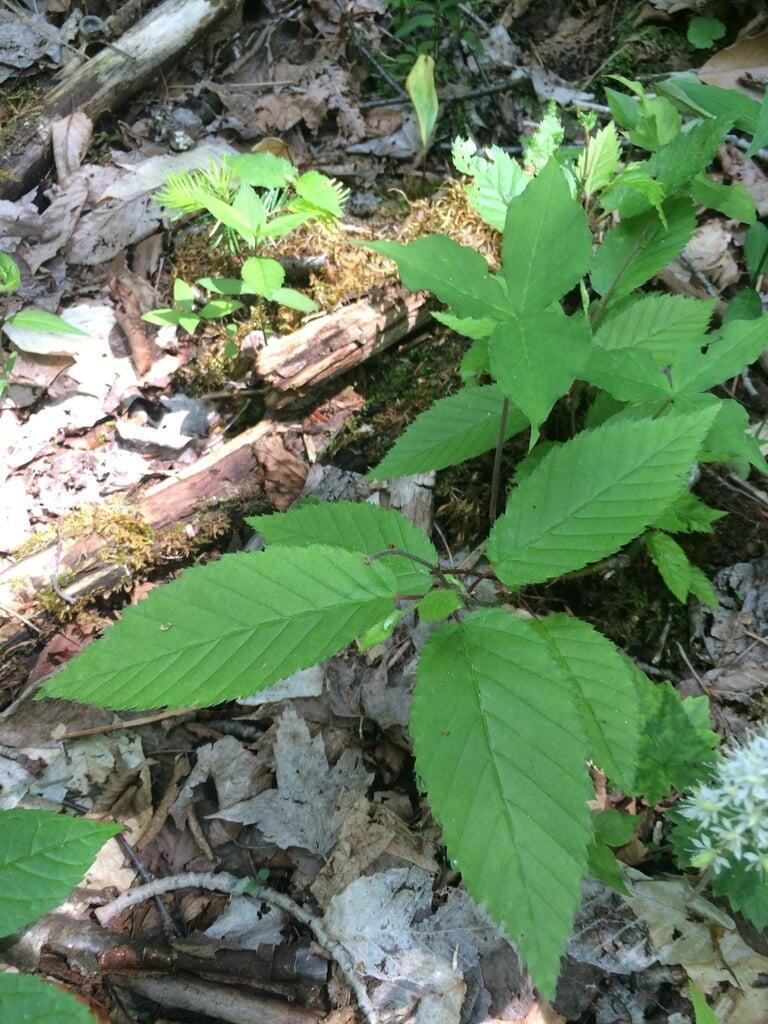Betula Alleghaniensis
Yellow birch description:
Betula alleghaniensis, also known as yellow birch, is a large deciduous tree that can grow up to 85 feet tall with a straight trunk that typically measures 2 to 3 feet in diameter. Its most distinguishing feature is its golden-yellow bark that peels in thin, curly strips, revealing a shiny bronze-colored inner bark. The tree's leaves are alternate, simple, and ovate with serrated margins, and they can grow up to 5 inches long and 3 inches wide. In the fall, the leaves turn a bright yellow color before dropping. Betula alleghaniensis produces both male and female flowers in the form of catkins that appear in the spring. The tree's fruit is a small, winged nutlet that matures in the late summer or early fall.
Betula alleghaniensis is commonly found in moist, cool forests, particularly in the eastern United States and Canada. It prefers well-drained, acidic soils and is often found growing alongside other tree species such as sugar maple, beech, and red oak.
The wood of Betula alleghaniensis is hard and strong, and it has been used for a variety of purposes, including furniture, veneer, flooring, and tool handles. The bark of the tree has been used in traditional medicine to treat a variety of ailments, including fever, rheumatism, and skin conditions. The tree also provides important food and shelter for a variety of wildlife species, including birds, mammals, and insects.
Native Range:
Yellow birch's range in the United States includes the Appalachian Mountains from Georgia to Maine, as well as parts of the Midwest and Great Lakes region. In particular, it is commonly found in the states of Pennsylvania, New York, Vermont, New Hampshire, and Maine.
Standard Plant Information:
Plant Height: 50-85'
Bloom time: May
Preferred Habitat: Does well in shade to full sun. Found in hardwood forests.
Planting:
Planting a tree seedling or small potted tree properly is important to ensure its healthy growth and development. Here are the steps you can follow to plant a tree:
Choose the right spot: Select a spot with adequate sunlight, water, and soil drainage. Make sure the tree has enough space to grow to its full size without interfering with other plants, structures, or utility lines.
Prepare the soil: Dig a hole that is twice as wide and slightly shallower than the root ball of the seedling. Remove weeds or debris from the area. Loosen the soil around the edges of the hole to help the roots grow more easily.
Plant the seedling: Place the seedling in the hole, making sure the top of the root ball is level with the ground surface. Gently spread out the roots and fill in the hole with soil, tamping it down lightly as you go.
Water the seedling: Water the tree deeply and thoroughly after planting, making sure the soil is evenly moist. This will help settle the soil around the roots and eliminate any air pockets.
Monitor the growth: Keep an eye on the seedling to make sure it is getting enough water and sunlight, and that it is not being attacked by pests or diseases. Prune any damaged or dead branches as necessary, and provide support if needed.
By following these steps, you can help ensure the healthy growth and development of your newly planted tree seedling.

